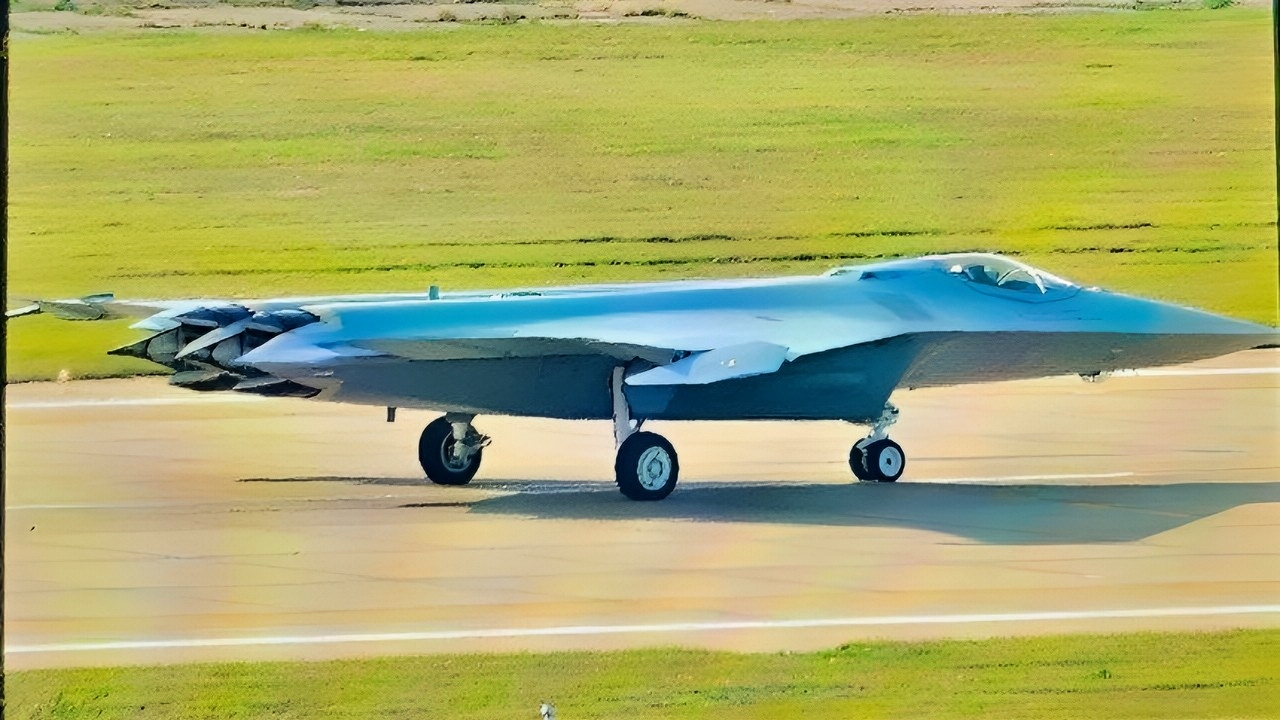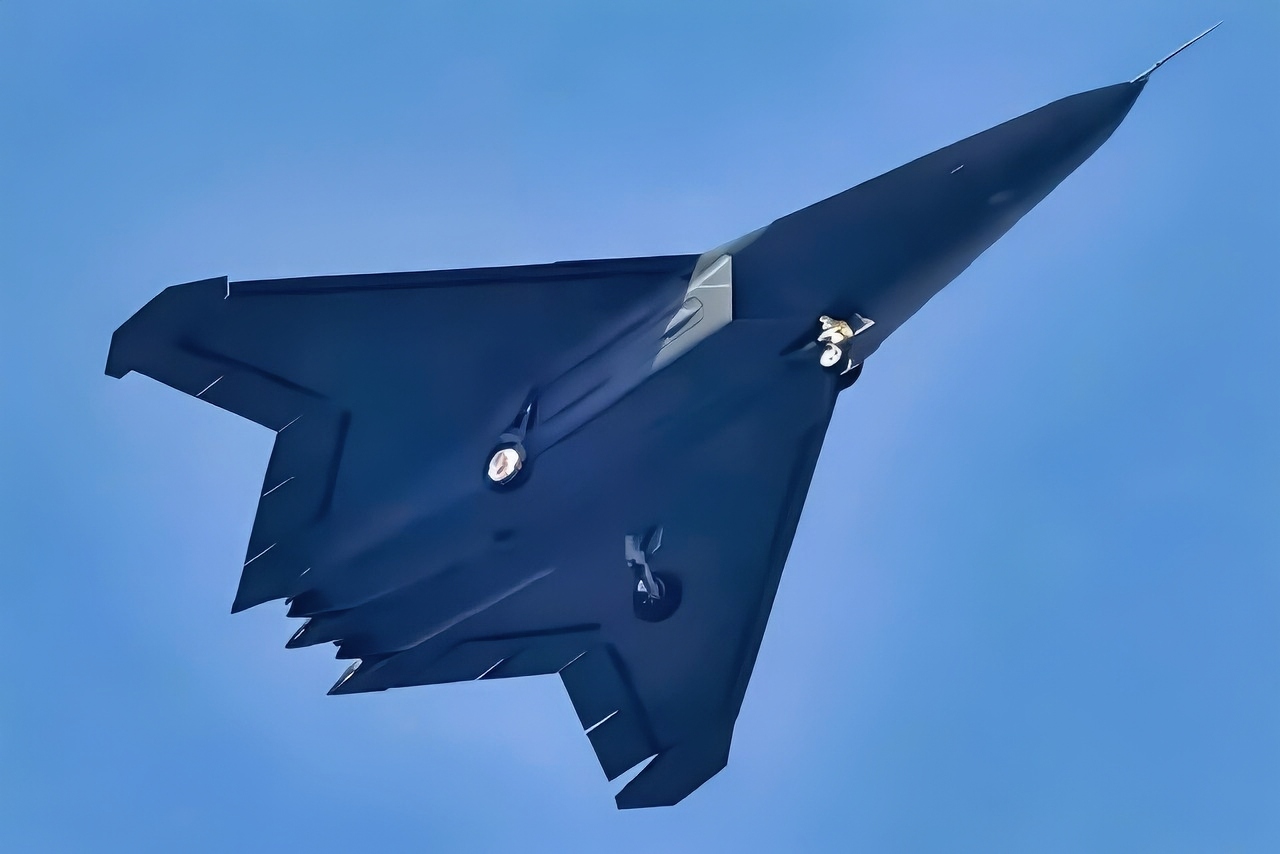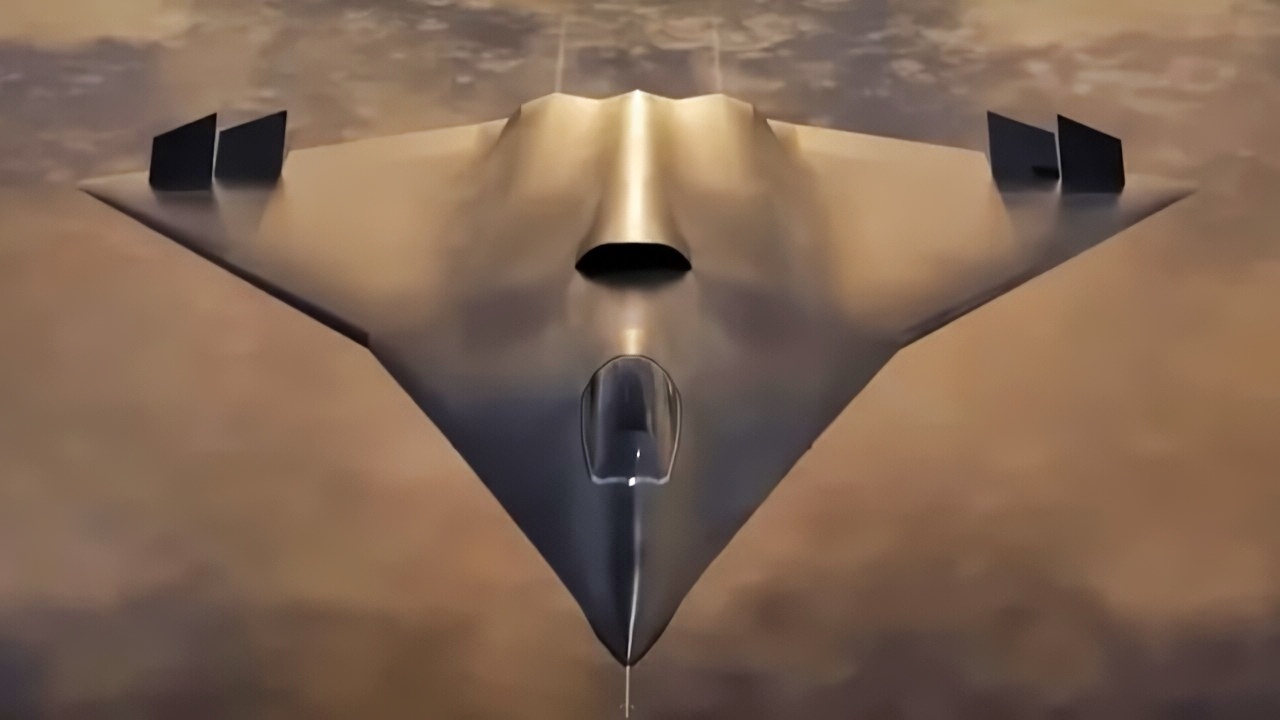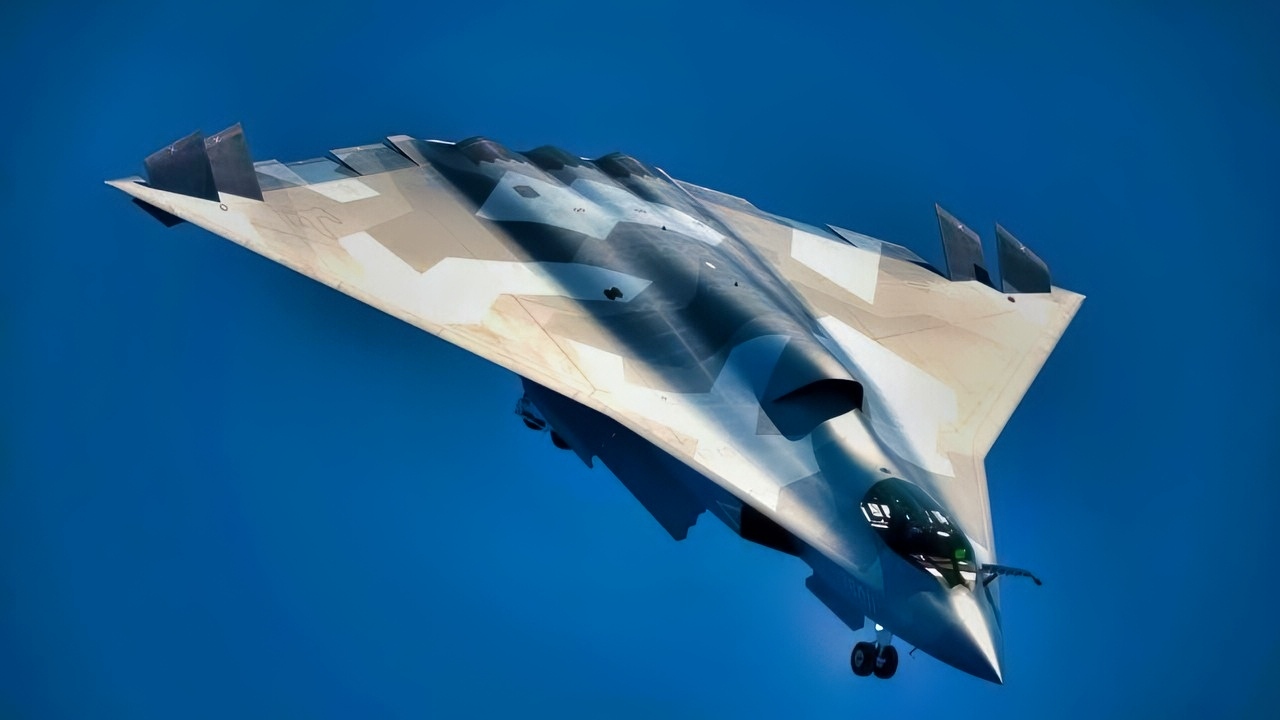Key Points and Summary – China’s stealth revolution is no longer hypothetical. With the J-20 in growing numbers, carrier-capable J-35s emerging, and unmanned stealth projects maturing, Beijing is building a dense “system of systems” that erodes America’s once-unquestioned air edge.
-The U.S. still holds key advantages—combat integration, logistics, and sixth-gen programs—but the margin is narrowing.

China J-20 Fighter Yellow. Image Credit: Creative Commons.
-To keep superiority, Washington must accelerate fifth-gen output, scale munitions, field loyal-wingmen, and train for jammed, data-dense fights.
-Allied modernization is essential, too. Air dominance will be relative and shifting—not absolute—and winning will hinge on resilient networks, sustained production, and fast adaptation across the next decade.
China’s Stealth Fighter Surge: Can the U.S. Keep Air Dominance?
Beijing’s stealth-fighter revolution is no longer a promise of the future—it is a reality of the present.
The question facing Washington is not whether the United States and its allies have lost air dominance, but how long they can sustain it as China builds, fields, and integrates new generations of stealth aircraft at scale.
The Cold War certainty that “we own the skies” is giving way to a harsher truth: America’s margin of superiority is narrowing, and its ability to project power uncontested is no longer guaranteed.
China’s Air Force Is Rising
It is no secret that Beijing has long been at work on an indigenous fleet of fifth-generation fighters to challenge the monopoly long held by American F-22 Raptors and F-35 Lightning IIs. After years of research and development, the People’s Liberation Army Air Force (PLAAF) has fielded its flagship Chengdu J-20 air-superiority fighter in significant numbers and with improved sensors, radar, and electronic warfare systems.

J-50 Fighter Image from X

J-50 Fighter from China Weibo Image
More recently, the Shenyang J-35, also known as the FC-31, has entered production and will soon be cleared for carrier service. Analysts have also reported at least two other stealth designs, with monikers like Chengdu J-36 and Shenyang J-50, under development, with the promise of long-range strike, drone-wingman capabilities, and deep-penetration ability that would place them in the same rough ballpark as the United States Air Force’s Next Generation Air Dominance (NGAD) program.
China has also tested a flying-wing unmanned combat air vehicle called the GJ-11, the first known demonstration of a fully unmanned Chinese stealth aircraft, suggesting the PLA is exploring manned-unmanned teaming operations. However, a clear operational timeline for that program has not yet been confirmed.
The implications for U.S. air dominance are alarming, but not yet existential. U.S. airpower no longer enjoys the unquestioned qualitative advantage it once did, and the People’s Republic of China is directly challenging America’s unipolar moment in the air. The United States has long enjoyed a decisive edge in stealth and advanced sensor and networking capabilities, and Washington has an unrivaled logistics base and over-the-air refueling support, as well as a suite of integration across command and control, early-warning systems, and information-sharing among allied air forces.
China’s latest fighters are beginning to undercut this advantage, not just because they are becoming “good,” but because they are being produced in large numbers and deployed within a burgeoning ecosystem of sensors, drones, and data-fusion systems.

J-36 Fighter. Image Credit: Screenshot from X.
The PLAN Aviation Branch’s development of the J-35 and the way it will interface with the PLAN’s carrier program is particularly important here, as it signals an ability to project force beyond the First Island Chain with considerable swagger. The use of the word “swagger” here is intended, because what we are seeing is the use of military industrial might, used not just in the old way of tank-on-tank fighting or block-for-block missile exchanges but in the way the country is being built as a whole.
Scale itself is a weapon. The PLA Air Force and PLAN Aviation Branch already operate together one of the world’s largest fleets of combat aircraft. They are rapidly expanding it with both new designs and additional procurements.
Quantity does not guarantee victory in an air war any more than a cavalcade of antiquated MiG-21s might, but a “system of systems” advantage does matter if it is married to capable and numerous systems in capable hands. A mixed force of stealth fighters, loyal-wingman drones, and layered air defense networks would complicate U.S. and allied air campaigns in a Taiwan contingency or South China Sea crisis.
And density matters too, especially when it involves more than fighter jets in the air, but also ground-based sensors, long-range surface-to-air missiles, and forward-deployed fighters that form a forward defense that would make the old American paradigm of achieving “day one” air superiority against China increasingly difficult.
Allied modernization lags are part of this problem. The United States has a unique, and unique-to-America, dependence on coalition partners for basing, logistics, and interoperability. However, many of those partners still fly fourth-generation aircraft that lack low-observable characteristics or advanced networking. The rise of China is not just narrowing the U.S.–China gap—it is also widening the gap between China and America’s allies, in many cases to a level that would prevent a coalition from conducting combat operations for an extended period of time.
China’s progress is not a statement of supremacy, however. The United States still retains decisive advantages in combat experience, global reach, and the industrial depth that allows it to field multiple systems at scale and even have spares. Many of China’s next-generation systems are still developmental or unproven in combat, with basic networking and integrated combat capabilities lagging Western standards.
The U.S. Air Force and Navy will also continue to advance their NGAD and F/A-XX programs, respectively, both of which aim to eventually field “sixth-generation” systems that blend stealth, speed, range, AI-enabled situational awareness, and other emergent capabilities. Details are still public at this time, but those programs represent the future of sustaining American airpower. U.S. forces also have decades of experience integrating air, space, and cyber domains together, something the PLAAF and PLAN Aviation Branch are still learning to replicate.

J-36 Fighter YouTube Screenshot/Artist Rendering.

J-36 Fighter Artist Rendition from X Screenshot
The strategic question, then, is not whether Washington is “behind,” but whether it can accelerate adaptation in a closing window of opportunity.
This means ramping up the production of fifth-generation fighters and fast-tracking unmanned systems, as well as scaling munitions and sustainment capacity across the force. It also means doctrinal change, namely a greater emphasis on preparing to fight in contested, data-dense environments in which the other guy can see, jam, and strike back just as hard. It may also mean expanding the concept of “air dominance” itself beyond a frozen-in-the-1970s understanding of total, unilateral, and permanently uncontested control of the skies toward a more dynamic, domain-integrated view of superiority that is partial, relative, and shifting, but which is also more resilient, more flexible, and still sufficient to the task at hand.
Beijing’s stealth revolution is not a paper tiger or a boogeyman of American national security policy; it is a clear and present strategic signal. The age of unquestioned American control of the world’s skies is ending, and the contest for the air is only the beginning of a new era of contestable airspace and agile advantage.
The United States and its allies are not yet outmatched in the race for the skies—but they are being matched faster than they can comfortably keep up. The next decade will decide whether “air dominance” remains an American birthright or whether it becomes a shared, shifting, and continually contested state of play.
If that day comes, the world’s most crucial battlespace will belong to no one.
About the Author: Dr. Andrew Latham
Andrew Latham is a non-resident fellow at Defense Priorities and a professor of international relations and political theory at Macalester College in Saint Paul, MN. You can follow him on X: @aakatham. He writes a daily column for the National Security Journal.
More Military
China’s New J-35 Navy Stealth Fighter Summed Up in 2 Words
China’s ‘Mighty Dragon’ J-20 Air Force Stealth Fighter Summed Up in 2 Words
China Is Trying to Turn the Indo-Pacific Into a Giant U.S. Navy ‘No-Go Zone’
$13 Billion Mistake? USS Gerald R. Ford Is the Navy’s Aircraft Carrier Agony
China’s ‘Thousands of Missiles’ Have a Message for U.S. Navy Aircraft Carriers











GhostTomahawk
October 27, 2025 at 7:46 pm
Nice article
Krystal cane
October 27, 2025 at 8:54 pm
No one can be prepared when you have a moron in charge of the United States and an even bigger hidden charge of the US military
Roger Edward Felker
October 28, 2025 at 5:01 pm
Another hack following the tradition of over estimating Russia and China. Look at the planes in your own article the J35 and J36 both have some very obvious non stealthy attributes that domonstrate the have yet to master the secret sauce. The Navy has had ample time to monitor and evaluate the “Mighty Dragon” and deemed it nothing to worry about.
The have nothing close to the actual stealth capabilities of US aircraft and nothing the F22 wouldn’t reduce rapidly to scrap.
It makes me wonder if your actually paid by China to mix their propaganda into your writing.